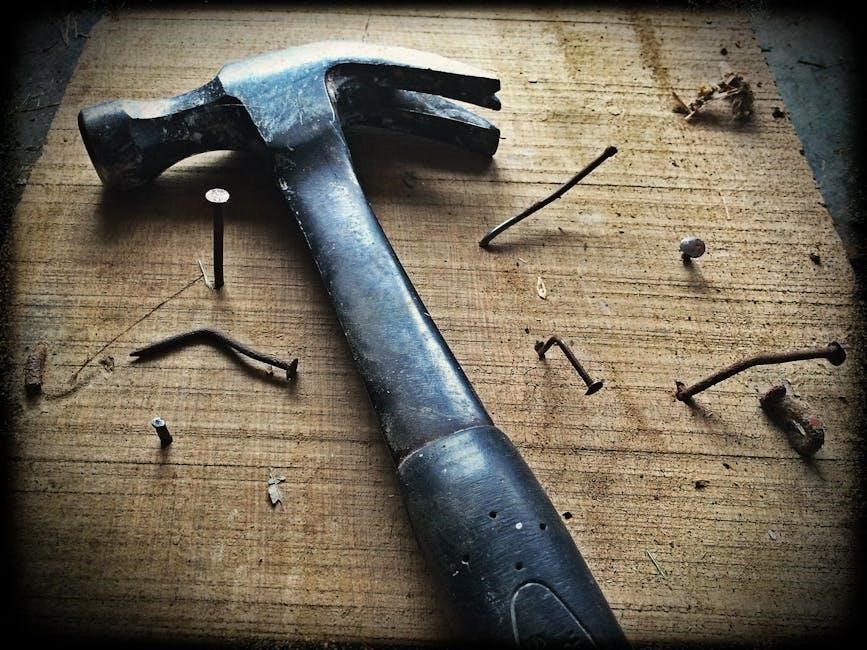longboard size guide
Longboard Size Guide⁚ Finding Your Perfect Ride
Selecting the right longboard size is crucial for optimal performance and enjoyment. Consider your height, weight, riding style (cruising, downhill, etc.), and experience level. Consult size charts, but remember personal preference plays a key role. A well-fitting longboard enhances stability and control.
Understanding Longboard Length and Wheelbase
Longboard length significantly impacts ride characteristics. Longer boards generally offer greater stability at higher speeds, making them ideal for cruising and downhill riding. However, their length can hinder maneuverability, making sharp turns more challenging. The wheelbase, the distance between the front and rear truck axles, is equally important. A longer wheelbase enhances stability, while a shorter wheelbase increases agility and responsiveness, beneficial for tricks and tight turns. Consider your riding style when choosing a longboard’s length and wheelbase. A longer board with a longer wheelbase is suitable for stable, high-speed rides. Conversely, a shorter board with a shorter wheelbase is better for quick, responsive turns and technical maneuvers. Understanding the interplay between these factors ensures you select a longboard suited to your skill level and riding preference. Beginners might find longer boards more manageable, while experienced riders might prefer shorter boards for their increased maneuverability.
The Impact of Wheelbase on Turning and Stability
The wheelbase, the distance between a longboard’s trucks, dramatically affects its turning radius and overall stability. A longer wheelbase provides superior stability at higher speeds, making it ideal for cruising or downhill riding where a smooth, controlled ride is prioritized. Longer wheelbases resist wobbles and offer a more planted feel, enhancing confidence, especially for beginners. However, this stability comes at the cost of maneuverability; longer wheelbases make sharp turns more difficult and require more effort. Conversely, a shorter wheelbase significantly improves a longboard’s turning radius, allowing for quick, nimble maneuvers and tighter turns. This is advantageous for experienced riders who perform tricks or navigate crowded areas. The trade-off is a reduction in stability at higher speeds; shorter wheelbases can feel less stable and more prone to wobbling. The optimal wheelbase depends on the rider’s skill level and intended use. Beginners benefit from a longer wheelbase for stability, while experienced riders might prefer a shorter wheelbase for maneuverability.
Longboard Flex Ratings⁚ Material, Laminates, and Concave
A longboard’s flex rating, describing its stiffness or flexibility, significantly impacts its riding characteristics and is determined by several factors. The core materials, often wood, significantly influence flex. Different wood types possess varying densities and flexibilities. Laminates, layers of fiberglass or carbon fiber added to the core, greatly affect the board’s stiffness and responsiveness. More laminates generally mean a stiffer board. Concave, the curvature of the deck, also plays a role; deeper concave can increase stiffness while reducing flex. A stiffer board offers better stability at higher speeds and is preferred for downhill riding or carrying heavier loads. It provides a more responsive feel for aggressive maneuvers, especially when performing tricks. However, stiffer boards might feel less comfortable for cruising or beginners who prefer a more forgiving ride. A more flexible board provides a smoother ride, absorbing bumps and vibrations effectively. This is advantageous for cruising on rough surfaces. However, a flexible board can feel less stable at higher speeds and lacks the responsiveness of a stiffer board. The choice depends on riding style and preference. Consider your riding style and experience when choosing a flex rating.
Longboard Size Chart⁚ A Quick Reference Guide
While numerous longboard size charts exist, offering varying recommendations based on height, weight, and shoe size, a universally accepted chart is unavailable. Many charts suggest longer boards for taller riders and shorter boards for those who prioritize maneuverability. However, personal preference significantly influences ideal size. Consider these points⁚ A longer board generally means increased stability at higher speeds, making it suitable for cruising and downhill riding. Shorter boards offer superior maneuverability, ideal for navigating tight corners and performing tricks. Board width also matters; wider boards enhance stability, particularly for larger riders. The provided text mentions various size ranges (22-50 inches), but specific dimensions depend heavily on the longboard’s intended use and the rider’s comfort level. Remember, a “one-size-fits-all” approach doesn’t exist, and experimenting may be needed to find the perfect fit. Therefore, use any chart as a guideline, but prioritize personal comfort and riding style.
Choosing a Longboard Based on Rider Height
Rider height is a common factor in longboard selection, with taller individuals often gravitating towards longer boards for enhanced stability. However, this isn’t a rigid rule. While longer boards (36-45+ inches) provide a smoother, more stable ride, especially at higher speeds, shorter boards (30-36 inches) offer increased maneuverability, benefiting shorter riders or those prioritizing agility. The provided text mentions a correlation between height and board length, but it’s not definitive. A 5’0″ rider might prefer a 32-inch board for maneuverability, while a 6’0″ rider might choose a 38-inch board for stability—or vice-versa, depending on riding style; Crucial factors beyond height include weight and preferred riding style (cruising, downhill, freestyle). A heavier rider might opt for a slightly longer board for better weight distribution and stability, regardless of height. Ultimately, personal preference and the intended riding environment should guide the decision, making trial and error a possibility in finding the most comfortable and suitable longboard length.
Longboard Styles and Their Ideal Sizes
Different longboard styles cater to various riding preferences and skill levels, influencing ideal size choices. Cruisers, popular for leisurely rides and commuting, typically range from 30 to 40 inches. Their shorter wheelbases enhance maneuverability in urban settings. Downhill longboards, designed for speed and stability on slopes, usually measure 40 inches or more. Their longer wheelbases provide stability at high speeds, crucial for downhill riding. Freestyle longboards, used for tricks and technical maneuvers, are often shorter and wider (around 30-36 inches), facilitating quick turns and responsive movements. The provided text indicates that longer boards are preferable for carving due to increased stability, while shorter boards excel in tight turns. However, individual preferences and rider experience play significant roles. Beginners might find mid-length boards (30-36 inches) versatile, offering a balance of stability and maneuverability. Ultimately, the ideal longboard size for each style is influenced by personal preference, rider skill, and the intended riding environment.
Considering Your Shoe Size and Foot Placement
Your shoe size significantly impacts longboard selection, particularly concerning deck width. Larger shoes necessitate a wider deck to ensure comfortable foot placement and prevent toe or heel overhang, which compromises balance and control. Ideally, your feet should comfortably rest on the board, with enough space to shift weight and maintain stability. Standing with feet positioned over the trucks (the axels connecting the wheels to the deck) is generally recommended for optimal balance. However, individual riding styles and preferences may influence foot placement. While a size chart can offer guidance, a wider deck doesn’t automatically equate to better performance. Too wide a deck can feel cumbersome and hinder maneuverability. The ideal width allows for comfortable foot placement without excessive overhang, maintaining a balance between stability and control. Therefore, prioritize a deck that accommodates your shoes while maintaining ease of movement and responsiveness.
Longboard Size and Riding Style⁚ Cruising vs. Downhill
Your preferred riding style heavily influences the ideal longboard size. Cruising, characterized by leisurely rides on relatively flat surfaces, benefits from longer boards (36-45+ inches). These offer superior stability at slower speeds, providing a smooth and comfortable ride. Their length enhances glide and momentum, requiring less effort to maintain speed. In contrast, downhill longboarding, involving high speeds and sharp turns, usually favors shorter boards (30-36 inches). Shorter decks are more maneuverable, allowing for quicker turns and better control at higher speeds. The reduced length makes it easier to navigate sharp bends and maintain stability during aggressive maneuvers. While personal preference exists, selecting a size appropriate for your riding style optimizes performance and safety. Longer boards excel in cruising situations while shorter boards are better suited for downhill’s demands. Understanding this distinction is key to choosing a longboard that complements your riding style.
The Importance of Board Width for Stability
While length significantly impacts a longboard’s performance, width plays a crucial role in overall stability, especially for beginners. Wider boards (9-10 inches or more) provide a larger platform for your feet, enhancing balance and control. This increased surface area distributes your weight more evenly, making it easier to maintain stability, particularly at slower speeds or when learning. Narrower boards (under 9 inches), while more agile and maneuverable, offer less stability, requiring more skill and balance to ride comfortably. They’re often preferred by experienced riders who prioritize quick turns and responsiveness. The added stability of a wider deck is beneficial for those new to longboarding, as it allows for a more confident and less intimidating experience. However, very wide boards can feel cumbersome for those who prioritize maneuverability. Finding the right balance between stability and maneuverability depends on your skill level and preferred riding style. Consider your foot size and personal preference when selecting board width to optimize your longboarding experience.
Longboard Size for Beginners⁚ Finding the Right Balance
Choosing your first longboard can feel overwhelming, but focusing on finding the right balance between stability and maneuverability simplifies the process. For beginners, a mid-length board (around 30-40 inches) is generally recommended. This length provides enough stability to help you feel confident and in control while still allowing for some maneuverability. A longer board will be more stable but less agile, while a shorter one will be quicker to turn but less forgiving if your balance falters. A slightly wider deck (around 9 inches) also improves stability, giving you a more secure platform for your feet. Avoid excessively long or short boards until you’ve developed your skills and balance. Remember, a comfortable and stable ride is key to building confidence and enjoyment in longboarding. Prioritize a board that inspires confidence, making your initial experiences positive and encouraging continued practice.
Longboard Size for Experienced Riders⁚ Advanced Considerations
Experienced longboarders often have a more nuanced approach to board selection, moving beyond the basic stability/maneuverability trade-off. Factors like preferred riding style become paramount. Downhill riders might favor longer boards (40+ inches) for increased stability at high speeds, while freeriders might prefer shorter, more maneuverable boards (30-36 inches) for technical tricks and quick turns. Wheelbase length significantly impacts turning radius; longer wheelbases offer more stability but less agility, while shorter wheelbases are the opposite. Beyond length, board width and flex become crucial considerations. Wider boards increase stability, particularly useful for larger riders or those navigating uneven terrain. Flex, determined by board construction, influences how the board responds to pressure and impacts your ride’s feel. Experienced riders often experiment with different flex ratings to find the perfect balance of responsiveness and comfort, tailoring their choice to their specific skills and desired riding style. Ultimately, board selection for advanced riders becomes a highly personalized decision.
Additional Factors to Consider When Choosing a Longboard Size
Beyond the standard height and weight considerations, several other factors influence longboard size selection. Your shoe size and foot placement significantly impact comfort and control; Larger feet might necessitate a wider board to ensure sufficient space and prevent foot overhang, which can compromise balance and maneuverability. Consider your riding environment. Urban settings with tight corners and obstacles may benefit from shorter, more agile boards. Conversely, smooth, open roads or downhill runs might favor longer, more stable boards. Your longboarding goals also play a role. Beginners might prioritize stability, opting for a mid-sized board, while experienced riders might choose boards tailored to specific disciplines like downhill or freestyle. Finally, don’t overlook the longboard’s weight and overall construction. Heavier boards offer increased stability but are more cumbersome to carry and maneuver. Lightweight boards are easier to transport but might sacrifice stability, particularly at higher speeds. Carefully weighing these additional factors alongside size recommendations ensures a perfect fit for your needs and preferences.








Leave a Comment